November 2025

Practical Permaculture for Home Landscapes, Your Community, and the
Whole Earth by Jessi Bloom & Dave Boehnlein.
A repeat review from back in October 2020, as this is a popular topic and an
outstanding book. In this thorough book, the authors cover the basic principles, processes, systems and more of permaculture with the intention of making it 'approachable and inspirational'.
They describe permaculture as a process that starts with a problem, then finds an elegant solution; living sustainably within ecological means; and using wholistic design decisions based on ethics and natural systems. The entire design process is explained, with detailed information on the plants, water, waste, energy, shelter, food, animals and structures that make up the garden. This thoughtful book can be a valuable resource for anyone who wants to be more deliberate in each step of their gardening practice.
Available from the library to borrow and the Gift Shop to buy.
October 2025
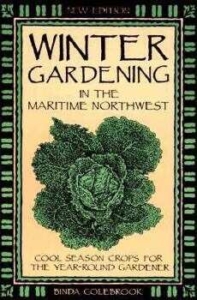
Winter Gardening in the Maritime Northwest: Cool Season Crops for the Year-Round Gardener
Binda Colebrook
SB 321 .C66 1989
Binda Colebrook was a wetlands biologist and environmental interpreter.
This author describes the cool season vegetables available to Pacific Northwest gardeners when planted at the appropriate time and by using suitable varieties.
Originally published in 1977, this book has rewarded gardeners with a 'fresh pick' of greens and herbs during the cooler months when seeds are planted between April and September. The selection of an appropriate growing site, what varieties to choose for hard weather and continuous harvest, how to utilize cold frames and cloches are several of her topics. Included in the book are charts for sowing and transplanting.
A chapter titled 'Sharecroppers' describes the pests and diseases that may thwart your harvest. Several solutions are suggested without resorting to commercial products, including cultural controls (when and how you take care of the crop), encouraging pest predators, traps, barriers and using botanical 'poisons'. Integrated Pest Management (IPM) is the buzzword here, requiring observation to create biological controls effective for your garden.
The author provides a comprehensive list of crucifers, herbs, onions and vegetables which will survive and possibly thrive over the maritime Northwest winter. The Appendix B 'Winter Crops for Livestock' includes named succulents, pasture plants and hedgerows. The extensive Appendix D provides suggestions for further reading.
This is a book for the adventuresome gardener! Have fun in the rain!
September 2025
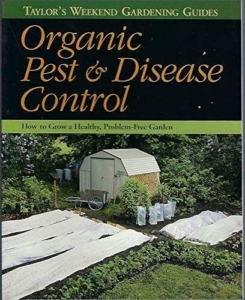
Organic Pest and Disease Control: How to Grow a Healthy, Problem-Free Garden
SB974. 0729 1997
(Five chapters, 116 pages with illustration and photographs)
This book, one of a series from Taylor's Weekend Gardening Guides, focuses on creating a healthy organic garden and maintaining it through vigilance of pests, diseases, weeds and animal pests. Knowing the soil condition is the starting point with suggested simple soil tests for texture, moisture retention, pH and nutrients levels.
The first chapter provides a beginner gardener with all the essential tips. Soil improvement basics including tilling, hand digging, drainage, and the regular addition of organic matter are presented in detail. Choosing the right plants that are well adapted to your soil and climate is important, keeping in mind the role of beneficial insects, choose plants and provide water and habitat to attract the insects.
Planning for crop rotation through the growing season, transplanting properly, mulch, fertilizing and watering, pruning and watching for insects or disease are addressed. The book offers chapters on Garden Pests and Garden Diseases, with suggestions for finding the appropriate control.
Inexpensive physical controls are illustrated. Accurate identification of garden pests is necessary to identify the most effective remedy. The Garden Pests chapter identifies 40 pests (with color illustration and actual size), describes damage and controls. Garden Diseases are described with color illustration of the plant damage. Eighteen Garden Weeds are pictured, described and weed control solutions offered. The final chapter of Animal Pests offers control suggestions for deer, rabbits, mice, voles, moles, raccoons, birds, cats and dogs. An Animal proof fence is illustrated with construction tips.
August 2025

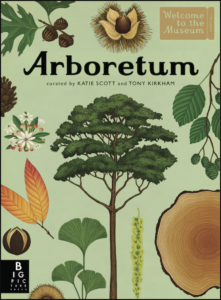
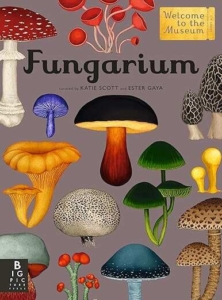
Botanicum, Arboretum and Fungarium
Katie Scott and Kathy Willis/Ester Gaya/Tony Kirkham
Imagine a museum for the plant and fungi kingdoms. A treasury of art and science. Botanicum, Arboretum and Fungarium are exhibition catalogues for this wondrous place.
The exquisite botanical art on every page in these oversized books could be framed. The fascinating science looks at a diversity of plants, trees and fungi from tiny algae to 80m trees. The galleries travel around the world showcasing their history and mystery. Many interesting and unusual species are highlighted.
Botanists, arborists and mycologists of any age and stage will be fascinated with the scope and style of these books. These curated guides can inspire artistic creativity and scientific study for anyone who loves plants and fungi.
They are available now to borrow from the HCP Library. These selections were made possible by a generous donation to the HCP Library fund for children’s books.
July 2025
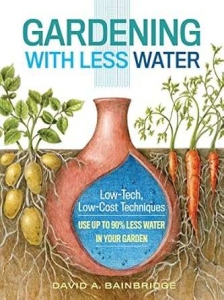
Gardening With Less Water
David A. Bainbridge 2015
This 127 page DIY book describes low cost, super-efficient irrigation systems. The author claims "you can double, triple, quadruple or even further increase your water use efficiency". He presents historical solutions developed globally over millennia to modern day systems for rainwater harvesting, storage and planned water release. With increased climate variability and the prediction of severe droughts in the future, the solutions Mr. Bainbridge describes are especially important to consider.
The book provides descriptive instruction, coloured diagrams and clear photographs to illustrate the following systems: buried clay pots or clay pipes, porous capsules, water wicks, deep pipes, porous hose, and tree shelters. The author offers many water-wise gardening tips with landscaping suggestions for water catchment. The final chapter talks about developing a plan for your garden, patio or farm. The author urges readers to start the conversation about water management with friends, family, neighbours, local and federal governments.
The book has a Supply List, a web page resource and an index to topics.
June 2025
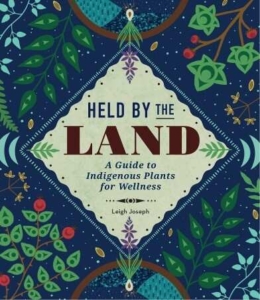
Held By the Land - A Guide to Indigenous Plants for Wellness by Leigh Joseph, an ethnobotanist from Squamish First Nation. 2023
This 192 page book is a field guide to plants that were and are vital to indigenous communities in the Pacific Northwest.
Forty-four culturally significant plants are identified with Indigenous, English and Latin botanical names. Each plant has a two page spread with a line drawing illustration, a description of habitat, a botanical description, information on sustainable harvest and timing of harvest, and the plant gift to health and wellness.
A recipe accompanies each plant description. A great time to make a nourishing cuticle oil with dried common horsetail, or perhaps a delicious Stinging Nettle pesto. An Apothecary Supply list is included.
May 2025
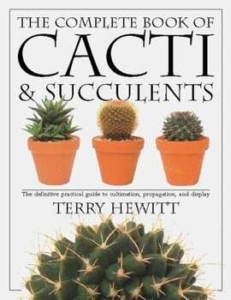
The Complete Book of Cacti & Succulents
Terry Hewitt
The recent surge in popularity of cacti and succulents is understandable. They are extraordinary! Not only do they look intriguing, they are tough. Their highly specialized anatomy, designed to survive prolonged drought, enables them to become dormant in severe conditions. The Complete Book of Cacti & Succulents is an excellent reference for these unique plants.
Beyond a simple globe or column, cacti and succulents come in many shapes, colours and sizes. Long snake-like stems! (Mammillaria matudae). Rich purple-red! (Haworthia coarctata). Over 12 meters tall and 150 years old! (Carnegiea gigantea). But there are some that don't get beyond 2.5cm and live for only 5 years (Frithia pulchra aka pink baby's toes). Height and spread diagrams, for both indoor and outdoor specimens, are one of the many highlights of this book. The excellent photographs throughout the Plant Catalogue of more than 350 species make identification easy.
Fast fact: cacti and succulents are native to the Americas. Beyond their intriguing appearance, they have had value for the Inca, Aztec and North American Indigenous peoples for centuries. Many foods, medicines and tools began as cacti or succulent plants. They also held religious significance. It wasn't until the 18th century that they made their way to Europe.
The well-illustrated anatomy, cultivation and propagation sections of The Complete Book of Cacti & Succulents can lead any plant parent to success with these extraordinary plants.
Drop by the HCP Library to borrow this fascinating book. And while you're there, check out our stellar specimen of Sansevieria trifasciata (aka mother-in-law's tongues).
April 2025
Invasive Flora of the West Coast by Collin Varner
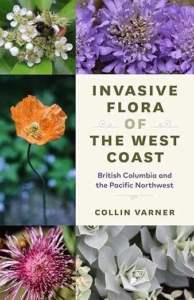
Scotch broom. Spurge laurel. English ivy. These names conjure dread in the hearts of many gardeners, mine included. But did you know that foxglove and comfrey are also considered invasive here? Not only that, but they are also toxic and yet sold locally. According to the Invasive Species Council of BC , invasives are the second greatest threat to biodiversity after habitat loss. Invasive Flora of the West Coast can help with the important step of identifying them.
Collin Varner has written another clear, concise and practical field guide. Over 170 plants are described, divided into herbaceous and woody plant sections. Photos are accompanied by important details, such as etymology, season, concerns and origin. Reproduction information included is important for control and eradication.
Collin Varner is a prolific local author with many years of horticultural and arboriculture experience. Borrow this book and check your garden for invasive species. Our West Coast biodiversity will appreciate it.
And for more books by Collin Varner or invasive species check out our online catalogue
March 2025
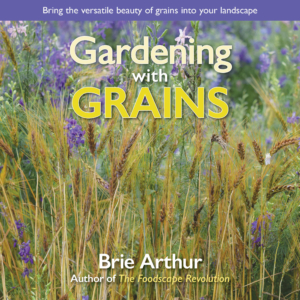
Gardening with Grains by Brie Arthur
Have you ever thought about growing grains? Brie Arthur shares her enthusiasm and experience on why this is an idea worth considering in Gardening with Grains. This is her curious, joyful adventure in bringing six common grains to her own suburban garden.
Arthur’s desire is to design and manage gardens that are first beautiful and inspiring. She shows how grains, with their structures, colours and textures, blend beautifully into residential landscapes as ornamental annuals. As well, she has gone beyond the traditional edible home garden of fruit and vegetables to include barley, oats, wheat, corn, rice, and sorghum.
History, benefits, design, cultivation, companions, harvesting, and even decorating and a few recipes are all touched on in this book. If you’re considering expanding your edibles collection to include grains, this book is worth borrowing.
February 2025
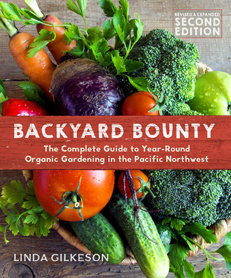
Backyard Bounty: The Complete Guide to Year-Round Organic Gardening in the Pacific Northwest. by Linda Gilkeson
"Grow more food with less work in any yard." The cover of Backyard Bounty just about says it all. With the climate crisis and food insecurity at hand, this may be the most important book we have in the HCP Library.
This is a guidebook and reference, one that you may want to read cover-to-cover because it is engaging, inspiring and full of practical and valuable information. Gilkeson writes about how to achieve a 12-month "living refrigerator" in your garden by extending the growing seasons. While our USDA zone is 8, microclimates rule, she explains. The monthly gardening calendar is geared to our PNW climate. Other topics include the importance of soil and pests, and how understanding them can lead to a more successful harvest. Garden journals are highly recommended. Vegetable and fruit profiles discuss culture, harvest, pests, varieties, and saving seed.
Gilkeson's sharing of her education and experience through writing, teaching, and workshops make her a treasured regional resource. Backyard Bounty will support novice and experienced gardeners to grow resilient and productive food gardens year-round.
Two other books by Linda Gilkeson available to borrow from the HCP Library are Year-Around Harvest: Winter Gardening on the Coast and West Coast Gardening: Natural Insect, Weed and Disease Control.
No Review January 2025
No Review December 2024
November 2024
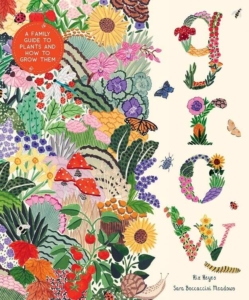
Grow: A Family Guide to Plants and How to Grow Them
Riz Reyes & Sara Boccaccini Meadows
Plants are heroes. This is the premise of the book Grow. A hero is defined in the Oxford dictionary as one who is admired for their courage, outstanding achievements, or noble qualities. Through this lens we can see how it applies to plants in "fighting through the challenges of life each and every day, showing their clever ways of growing, adapting, and teaching valuable life lessons each and every season."
Fifteen plant heroes are portrayed in this charming children's book. Horticulturist Riz Reyes shares their powers, stories, relatives, historical significance and tips for growing. Illustrator Sara Boccaccini Meadows brings it all to life with vivid watercolours. Their enthusiasm for this project results in an inspiring journey for both children and their adults.
Learn about carrots, the heroes of colour and cuisine: their taproots, pigments, ways to enjoy them, herbs and spices in their Apiaceae family, origins in Central Asia, succession planting and thinning. Then there's daffodil, aloe vera, bamboo, mushroom, and on and on. Short paragraphs, sidebars, and lots of illustrations make this book easy to dip in and out of. A glossary supports its educational aspect.
Grow is a celebration of plants and the role they play in our lives. As Reyes says in the introduction, "It's almost magical how they grow and flourish around us, providing food, shelter and medicine." The perspective of plants as heroes is something we can all share.
Available now to borrow from the HCP Library.
October 2024
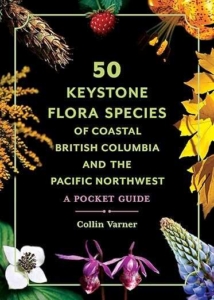
50 Keystone Flora Species of Coastal British Columbia and the Pacific Northwest
Collin Varner
You probably know that Garry Oak trees (Quercus garryana) are critically important to the ecology of the Pacific Northwest. Hundreds of plant and animal species are compromised when these meadows are disrupted. Some, such as acorn woodpeckers, are already extinct.
A keystone species, such as the Garry oak, supports an entire ecosystem. Like the topmost stone in an arch, if it is removed the entire arch collapses.
50 Keystone Flora Species of Coastal British Columbia and the Pacific Northwest is an easy reference for everyone who goes outside. It is a concise pocket field guide to the trees, flowering plants, fruit-bearing plants, marine plants and fungi that are at the heart of our local ecosystem. The descriptions and comments on ecological roles are complimented by colour photographs.
Collin Varner is a well-known, well-respected Squamish ethnobotanist, horticulturist, arboriculturist, teacher and author.
Available now to borrow from the HCP Library.
September 2024

Mosses, Lichens & Ferns of Northwest North America
Vitt, Marsh & Bovey
Fun facts: Mosses, lichens and ferns are cryptogams (reproduce using spores not seeds or flowers). Sphagnum moss can hold 20x its own weight in water. Lichen is fungi in a symbiotic relationship with algae. Ferns and their allies have been found in fossils from the Devonian age (400 million years ago).
Mosses, Lichens & Ferns of Northwest North America is a photographic field guide, useful to anyone who wants to look deeper into their amazing lives. It's attractive and comprehensive. The section on vegetation zones helps determine what grows where, describing everything from Arctic tundra to grasslands. The section on collection, preservation and study describes tools and methods for complete investigation in the field and at home or in the laboratory. Unfortunately, the section on history looks only at colonial collectors, starting with Archibald Menzies in 1792.
For each of the four main sections there is an introduction on structure and biology. A Key to the Recognition of Species asks questions to narrow the focus down to a specific plant. Each listing has a photograph, distribution map, habitat symbol and detailed, precise description.
Did you know that the lichen Cladina stellaris was often dyed and used as trees for model railways?
Mosses, Lichens & Ferns of Northwest North America is a very good field guide for in depth study of these vital and fascinating cryptogams. It is not light reading but has an important place in horticultural research.
Available now to borrow from the HCP Library.
August 2024
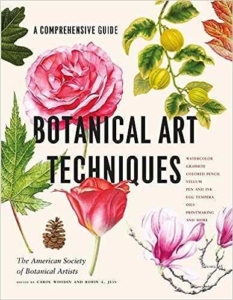
Botanical Art Techniques
Edited by Carol Woodin & Robin A. Jess
With our Arts & Music Festival of August 10th in mind, here's a look at an outstanding and comprehensive guide to an art form we here at the library love, botanical art. The experts at the American Society of Botanical Artists have put together this engaging reference manual with tutorials for projects that move from introductory to advanced. Every major technique used in botanical art is dissected, from graphite to watercolours to oils.
A dying art form in the late 20th Century, botanical art is now enjoying a renaissance. Scientific accuracy, aesthetic quality and artistic proficiency are the three pillars that it, and this book, are built on. By the numbers, there are tutorials by more than 50 of the best contemporary botanical artists, with more than 1000 instructive photographs in more than 400 pages in this encyclopedic instruction guide.
Observation of the subject is key. This book inspires everyone to take a fresh look at plants. The possibilities for expression in botanical art are endless and can last a lifetime. Botanical Art Techniques covers all the bases. It is available now to borrow from the HCP Library. And check out our online catalogue for other horticulture books that contain botanical art.
No Review July 2024
June 2024
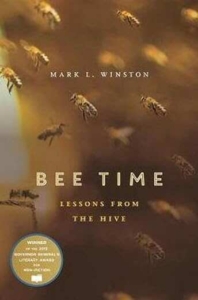
Bee Time: Lessons from the Hive
Mark L. Winston
Decades of devotion to the study of bees are brought to a reflective and scientific confluence in Bee Time: Lessons from the Hive, written by Simon Fraser University professor Mark L. Winston.
It has the rare distinction of winning the Governor General's Literary Award for Non-Fiction. The place of bees in the world and our relationship with them is considered through a loving lens.
In 1860 moveable frame honeybee hives were invented. Honey production increased dramatically, and colony observations led to numerous discoveries. It was confirmed that they are sophisticated: bees collaborate and communicate.
Stressors for bees include the use of chemicals such as pesticides and antibiotics, pests and diseases, loss of habitat and climate change. Research suggests that a combination of these factors is responsible for the serious decline of the bee population worldwide. However, Winston believes that the resilience of bees is inspiring.
The stories in Bee Time: Lessons from the Hive look at bees and their importance, honey and how it's made, beekeepers, the honey business, colony collapse disorder and even killer bees. Infused in these stories are ideas about what bees can teach us and how important it is to learn from them.
“Bees remind us that it's only together with nature that we can guarantee our own prosperity and survival.”
May 2024
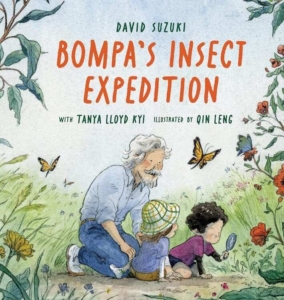
Bompa's Insect Expedition
David Suzuki, Tanya Lloyd Kyi, Qin Leng
In this fun, nonfiction picture book, renowned scientist and environmentalist David Suzuki (Bompa) takes his twin grandchildren, Nakina and Kaoru, on a nature exploration.
They love insects and are surprised to find such adventure in their own backyard. Their conversation includes amazing facts about everyday bugs supplemented by an imaginary flight with wings like dragonflies. The What if…? questions are answered by Bompa and with lush, colourful illustrations. "The world's most interesting picnic guests" join them for a snack to close out the expedition.
This book goes beyond a basic introduction to insects. It's award-winning author/illustrator team enthusiastically brings to life "insect heroes" to budding entomologists. It celebrates family bonds. It shows that nature adventures can happen right outside your door.
Suitable for children 4-8 years old.
April 2024
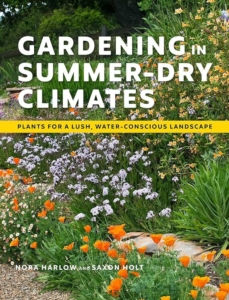
Gardening in Summer-Dry Climates
Nora Harlow & Saxon Holt
This is the book for us right now. Climate trends suggest extended summer droughts may become more common on the Pacific Coast. The philosophy behind Gardening in Summer-Dry Climates is to plant climate-adapted plants in harmony with our natural landscape.
Most of the book is a compendium of plants that thrive with moderate to no summer water on the Pacific Coast. The brief descriptions include plant origins, USDA hardiness zones and Sunset climate zones to help determine what will succeed in your garden.
The Plants for Special Places section includes lists for both plants for dryish shade and plants for coastal gardens.
The Guide to Plant Selection charts types of plant, exposure and flowering season.
Some Thoughts on Design is an important section of the book. Water, wildfire, carbon capture and soil are discussed. The overarching theme is about making gardens that respect the natural world, and design as a continuous and interactive process. From the Preface: "Garden Earth requires our stewardship and we gardeners can be a positive force for sustainability."
March 2024

Botanicum
Katie Scott and Kathy Willis
Imagine a museum for the plant kingdom. A treasury of art and science. Botanicum is an exhibition catalogue for this wondrous place.
The exquisite botanical art on every page in this oversized volume could be framed. The fascinating science looks at a diversity of plants from tiny algae to 80m trees. The galleries travel around the world showcasing the history and unique characteristics of the main plant groups. Many interesting and unusual species are highlighted.
February 2024

You Are Light
Aaron Becker
This elegant, poetic children's book is an ode to light. It celebrates important connections in the natural world using words, illustrations and die-cut pages.
The creative format integrates a changing colour wheel simulating stained glass windows making the story come alive. The lyrical text is enhanced by stenciled watercolour art. Flowers, food, water and even the moon are all aspects of nature influenced by the sun. Families will appreciate that children are drawn into the story by connecting the wonder of light in everything, including us.
Available now to borrow from the new and growing HCP library children's book collection
January 2024

Attracting Native Pollinators
The Xerces Society Guide
While bees are the most important single group, wasps, butterflies, moths, flies and beetles also pollinate flowering plants, including 1/3 of our food. The fact that there are multiple threats to their health and habitat is alarming. As these insects become extinct, the effects on plant and other species can be disastrous.
Fortunately, the Xerces Society has written this comprehensive manual to help anyone with even a few plants act on this important issue. Creating a pollinator-friendly habitat can be as easy as providing flowers for foraging and host plants for nesting. Attracting Native Pollinators offers practical and specific information on all aspects of building and managing a supportive environment.
Excellent photos make this a practical ID guide as well, especially for native bees. Identifying, foraging habits, nests and conservation concerns are discussed for each genus. Did you know that gardeners often cross paths with the Andrena Mining bee? It nests in lawns. (No worries, their stingers can't penetrate our skin.)
While some threats to pollinators are large scale, habitat loss and pesticide use are aspects we can all influence. As you consult your seed catalogues this winter, consider how these phenomenal beings can interact with your garden.
Attracting Native Pollinators is available now to borrow from the HCP Library.
December 2023
No review this month
November 2023
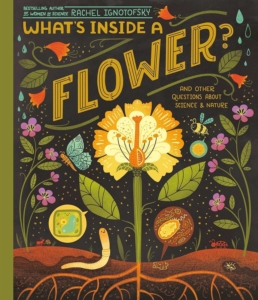
What's Inside a Flower?
Rachel Ignotofsky
Go on an adventure in the natural world with Rachel Ignotofsky's book What's Inside a Flower? Written by a NYT bestselling author, illustrator and designer, this book takes us on an educational nature walk through the life cycle of plants. Engaging text and vivid illustrations present a wealth of science facts about flower biology and pollination. The charming, layered text builds an appreciation of all things flowers. The rich, detailed images are a delightful combination of botanical illustration with whimsical art deco styling. Children in a wide age range will find this book engaging and inspiring.
Available now to borrow from the new and growing HCP library children's book collection.
October 2023

Thank You, Tree
Illustrated by Fiona Lee, Text by Hannah Fries
To celebrate the beginning of the HCP Library's brand-new children's collection, today we're sharing our first book donation, Thank You, Tree by Fiona Lee and Hannah Fries.
In this lovely board book gratitude is expressed for the gifts of trees. Throughout the seasons diverse children describe what they appreciate about trees (branches to swing and climb on, shade on a hot day etc). Lovely illustrations and simple text make this book suitable for youngest children. Searching for the sometimes-elusive chipmunk on each page adds a dimension of play. Plus, the guide to tree species at the back with an invitation to find each throughout the book adds another element for slightly older children.
September 2023

Held by the Land (Wa ch'ích'istway ta temíxw)
Leigh Joseph
In Held by the Land, Leigh Joseph describes how treasured moments in her life have been spent on the land where she was at ease, sure and connected. While planting, harvesting, sharing meals and more she felt supported and held by the natural world. She sees this connection as a relationship where the earth shares its bountiful botanical gifts with us, but we also have a responsibility to give back to these relatives.
Held by the Land is part narrative, part botanical field guide and part recipe book. Joseph's love and respect for her Squamish culture and its important plants come though clearly. She teaches us that we owe it to future generations to build sustainable and respectful relationships with plants. Healthy ecosystems will result when we recognize our interconnectedness with the natural world.
Mindfulness is an important aspect of Joseph's harvest practices. She explains what it is, how we can integrate it and gives her example of wild rose harvests.
Plant profiles are offered for trees, shrubs, flowering herbs and more. Each listing discusses building relationships, habitat, a botanical description, sustainable harvesting, plant gifts and a recipe. With camas there is a description of how to grow this culturally important food plant to support its restoration.
August 2023
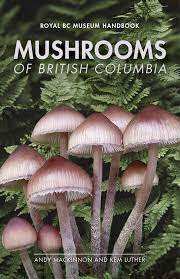
Mushrooms of British Columbia
Andy MacKinnon and Kem Luther
The poisonous deathcap (Amanita phalloides) is believed to have been brought to BC on the roots of imported trees that were planted frequently in parks and along city streets. A sighting has been made in a Garry oak meadow. The BC Centre for Disease Control and several districts, including Oak Bay, have issues alerts about it.
Should you want to delve deeper into the world of fungi the Royal BC Museum Handbook Mushrooms of British Columbia will get you off to a great start. As with other publications from the museum, this handbook is beautiful and practical. Excellent photographs and thorough descriptions assist in identifying over 350 species of fungal fruiting bodies.
Beyond that, there are articles throughout that discuss the world of mushrooms from a broader perspective. Conservation, climate change,medicinal and Indigenous uses, commercial harvesting and of course poisonous varieties are all given attention.
A success story close to home involves Observatory Hill, home to the Dominion Astrophysical Observatory, in Saanich. Starting in 2004 Oluna Ceska led one of the world's longest and largest mushroom studies there. Over 1,400 species were identified. Among other things, her work showed that mushrooms can be found throughout the year yet may not appear from one year to the next.
Common names of mushrooms can be unusual, describing food (fried chicken), animals (bellybutton hedgehog), humans (dead man's foot) the supernatural (witch's butter) or miscellaneous things (train wrecker). To find out more about these and others, consider borrowing Mushrooms of British Columbia from the HCP Library.
July 2023
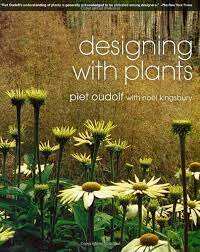 Designing with Plants
Designing with Plants
Piet Oudolf with Nöel Kingsbury
Gardens with emotion and mood are the hallmarks of Piet Oudolf's garden designs. In Designing with Plants Oudolf re-evaluates the concept of beauty in the garden. Beyond colour, he considers form, texture, light, and movement in the seasonal lifecycle of plants. This overview of Oudolf's theory and practice is informative and visually stunning. As Nöel Kingsbury says in the introduction, it's aim is to explain his work and make his method accessible. His naturalistic style uses perennials and grasses to create gardens that are full, abundant, and relaxed. His broad design principles balance specific details, such as a directory of key plants. In his own words, "Gardening is a living process, which is why this book proposes the creation of something that changes through the years, even from day to day." Piet Oudolf is an award-winning garden designer, nurseryman, and author. Contemplate his thought-provoking insights on garden design by reading Designing with Plants. Available to borrow now from the HCP Library. Find other books by Piet Oudolf and Nöel Kingsbury in our online catalogue. His documentaries, "5 Seasons" and "Paradise within Arm's Reach" are available on YouTube.
June 2023
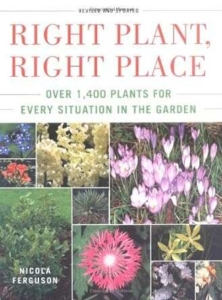 Right Plant, Right Place
Right Plant, Right Place
By Nicole Ferguson
Have you ever been at a garden centre and made a spontaneous purchase based on looks alone? Welcome to the club. Now you can avoid unsuitable plants by consulting Nicole Ferguson's book Right Plant, Right Place. The "right plant, right place" principle was inspired by Beth Chatto (1923 - 2018). It is a key to successful gardening. (Check our online catalogue for many library books by her.) Ferguson's book Right Plant, Right Place is for everyone, beginner to expert. It leads readers to zero-in on plants that will grow well in their own gardens. Sections include growing conditions, purpose, and appearance, with chapters such as "Plants suitable for dry soils in hot, sunny sites" and "Decorative plants with flowers suitable for cutting." Each entry has a photo, description of plant size, flowering season, needs, and care. Rounding out the chapters are bonus lists of plants found elsewhere in the book. Check out this comprehensive reference so you can go plant shopping with a purpose. Available to borrow now from the HCP Library.
May 2023
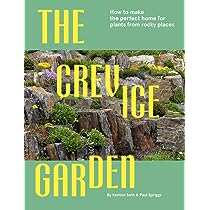 The Crevice Garden
The Crevice Garden
By Kenton Seth and Paul Spriggs
A conuence of mountain climbing and a career in horticulture brought local author Paul Spriggs deep into the world of gardening with rocks. The passion that Spriggs and co-author Kenton Seth bring to this topic is evident in this new, beautifully illustrated guide to what crevice gardening is and how to design, build and plant one. In definition, this style of rock gardening buries rocks by at least half and uses the crevices between them "to mimic the conditions that many difficult-to-grow plants need." The history, dynamics, advantages, and planning discussions lead to the section on the eight steps in building your own crevice garden. While creating one takes effort, the maintenance is less than traditional beds and borders as the plants are slow-growing and long-lived. Case studies from such places as Wisley and Port Townsend demonstrate the beauty and exibility of this gardening technique. Beacon Hill Park is listed as a resource to visit. The plant proles section offers a starting point and a reference. (Dragon's Head (Dracocephalum) is a great choice for a beginning crevice gardener.) Plant lists also help with design. Through this book I gained a deeper appreciation of the alpine world, elements both hard and soft, and ways it can be incorporated into our own gardens. It is available now to borrow from the HCP Library.
April 2023
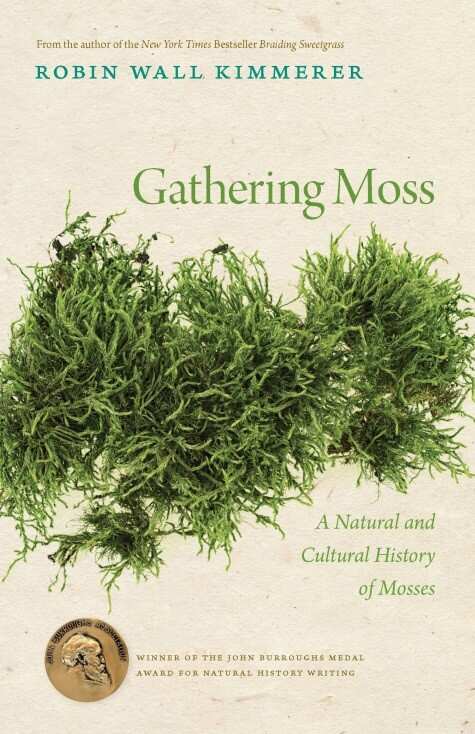
Gathering Moss
Robin Wall Kimmerer
Delicate and elementary, mosses (bryophytes) are the most primitive of land plants. They lack flowers, fruit, seeds, and roots. Yet, as Robin Wall Kimmerer puts it, "Mosses are not elevator music; they are the intertwined threads of a Beethoven quartet."
In Gathering Moss, Kimmerer paints a portrait of this amazing plant that lends us a microscope as entry to their complex world. She combines her Indigenous ways of understanding, her scientific training, and education from the plants themselves into a natural and cultural history.
Composed merely of stems and leaves, mosses (22,000 species worldwide) thrive in the ‘boundary layer' where air meets land. You may have felt this microclimate when lying on the ground. Like a floating greenhouse, it traps heat, water vapor and carbon dioxide for photosynthesis.
While not eaten, mosses over the centuries have had many uses, most notably as diapers for babies packed into cradleboards. Despite their simplicity, Kimmerer shows us that mosses exist not as solitary beings in nature, but in context, in a web of relationships.
You can borrow Gathering Moss, or Robin Wall Kimmerer's other book Braiding Sweetgrass, from the HCP Library.
March 2023
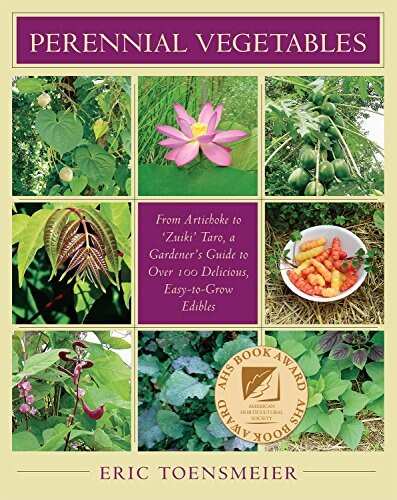
Perennial Vegetables
Eric Toensmeier
To expand the bounds of your kitchen garden, consider checking out Perennial Vegetables by Eric Toensmeier. This catalogue of plant profiles includes some exotic and unusual species, little-known and underappreciated. Consider Lycium barbarum (wolfberry or goji berry). While it isn't a cure-all for disease, it's shoots, leaves and berries are used in traditional Asian cuisine. It is one in a long list of perennial vegetables of Toensmeier's recommendations for Pacific Northwest gardening. Other surprising options include fuki, jinenjo, achira, and scorzonera.
The idea with perennial vegetables is that they complement annuals, not replace them. Being low-maintenance and extending the harvest season gives them some advantages as food crops. They can taste delicious, yield abundantly, and produce for many years without replanting, benefits that will be attractive to many gardeners.
Toensmeier also discusses tips and techniques, design ideas, and native vs.non-native. Each of the over 100 thorough plant profiles includes a North American map of growth range, history, ecology, preferences, harvest, uses and much more. Many drawings and photographs supplement the text.
This American Horticultural Society book award-winner was written by a permaculture advocate and teacher who brings enthusiasm and expertise to the topic of edible perennials. Available now to borrow from the HCP Library.
February 2023

Armitage's Garden Annuals: A Color Encyclopedia
Allan M. Armitage
Many gardeners are studying seed catalogues this month and planning their best garden yet. Annuals can play their part in the design by injecting quick, long-lasting colour. Whether you're planting your own seeds now or setting out transplants later, Armitage's Garden Annuals: A Color Encyclopedia can make choosing them fun.
This isn't your typical encyclopedia. Armitage has written lively text to go with over 1300 gorgeous photos. He evaluates the garden worthiness and beauty of these annuals with personal commentary and inspiring advice. He describes Acalypha as schizophrenic, and the genus Amaranthus as the Halloween award-winner; Acmella oleracea is the toothache plant, and Torenia is the wishbone flower.
This attractive and easy to use book includes more that 2 dozen fine lists of annuals suited to needs such as prickly, naturalizing, unique flower or fruit, and "love the water". Armitage focuses on plants that earn their keep.
Armitage has an impressive resume that includes prestigious awards, 9 books, and current head of the University of Georgia Horticultural Gardens. This book was written as complementary to his Armitage's Manual of Annuals, Biennials and Half-Hardy Plants, which goes into more depth. Both of these books, and others written by Armitage, are available to borrow from the HCP Library.
January 2023
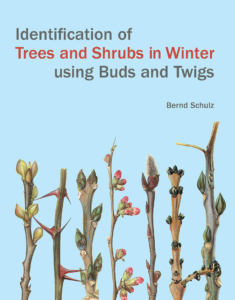
Identification of Trees and Shrubs in Winter Using Buds and Twigs
Bernd Schulz
As well as cleaning tools and reading seed catalogues, there is now an opportunity for gardeners to take a close look at plants in their winter state. For the enthusiast there is a guide to identifying almost every temperate tree that we are likely to find growing in our gardens and arboretums. Identification of Trees and Shrubs in Winter Using Buds and Twigs is a monumental taxonomic reference work published by Royal Botanic Gardens, Kew.
To help guide us through a systematic approach to the identification of deciduous woody plants in winter, this book by Bern Schulz includes an identification key and a quick reference key. Over 1900 drawings and paintings by the author make this comprehensive manual a practical tool.
Most of this hefty volume covers true dicotyledons, but other angiosperms and gymnosperms are also studied. The Basics of Botany chapter covers the structure of woody plants including stems, prickles and fruit. The Index to Botanical Terms helps make it more accessible.
While visually very attractive, this authoritative study is not a light read. But if you want to see the difference in winter between a clematis and a ginko, or if you want to identify your species of willow, this book just might be the one for you. It's available to borrow now from the HCP Library.
November 2022
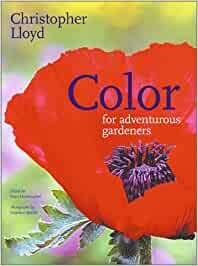 Color for Adventurous Gardeners
Color for Adventurous Gardeners
Christopher Lloyd
"Glamorous, sophisticated and therefore greatly to be desired" is how Christopher Lloyd describes the colour black and its rarity in flowers and plants. More than just a catalogue of flowers, Color for Adventurous Gardeners is about the excitement of gardening.
Lloyd supports learning the rules of colour but mainly so you can break them. "The limitations imposed by rules are a safe haven, but the adventurous gardener will want to try something different." (Heads up: he didn't use a colour wheel.) His bold message is that in the right conditions, every colour can be used well with any other. Even the most challenging, orange. His recipe is experiment, review and carry on, but always use plants you love.
Christopher Lloyd (1921-2006) held the RHS Victoria Medal of Honour and was an officer of the Order of the British Empire. His reputation as a gardening author of note continues today. As you would expect, this book is lushly illustrated with photographs of individual plants and gardens filled with riotous colour.
Color for Adventurous Gardeners and other books by Christopher Lloyd are on the shelves and available to borrow from the HCP Library. See our online catalogue to see our entire book collection or send an email to [email protected] to discover them all.
October 2022
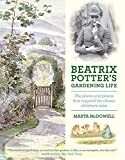 Beatrix Potter's Gardening Life: The plants and places that inspired the classic children's tales
Beatrix Potter's Gardening Life: The plants and places that inspired the classic children's tales
Marta McDowell
Beatrix Potter (1866-1943) was enchanted by gardens from a young age. Long before the invention of Peter Rabbit (self-published in 1901 at 35), she was drawing and painting botanical illustrations. Her parents encouraged herand sent her to art lessons. And as an adolescent with health problems, this was her best method of coping. Fast forward to 1905, and after the death of her ancé, Potter bought a working farm with a cottage and a modest garden. Marta McDowell's Beatrix Potter's Gardening Life is part biography, part seasonal garden essay and part travelogue to the British landscapes that inspired Potter. It is profusely illustrated with her artwork (plants, fungi and landscapes), plus photos from the past and present. Tables of her plants (grown and published) round out this thorough inspection of the botanical aspect of her life. Borrow this book from the HCP Library and be inspired.
September 2022
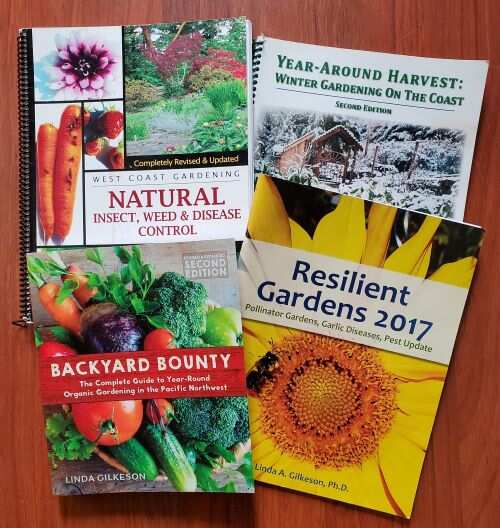 Year-Around Harvest: Winter Gardening on the Coast
Year-Around Harvest: Winter Gardening on the Coast
Resilient Gardens: Pollinator Gardens, Garlic Diseases, Pest Update
ISBN 9780991733538
West Coast Gardening: Natural Insect, Weed & Disease Control
ISBN 9780991733507
By Linda Gilkeson
Linda Gilkeson is a well-known and highly respected Master Gardener, educator, writer and entomologist on the West Coast. Her books support us in having healthy gardens with large crops in natural ways. Backyard Bounty is an all-around guide to organically growing more food with less work. Practical and specific to the Pacific Northwest, she shows us how busy people can harvest a surprising amount of food in efficient, low-maintenance gardens. After briefly explaining how plants grow so that we can give them what they need to thrive, she covers many topics that help make a garden flourish.
Year-Around Harvest: Winter Gardening on the Coast is for anyone who wants to enjoy fresh home-grown fruit and vegetables all year. And who wouldn't? Gilkeson shows us that it doesn't take a lot of extra effort or expense. For example, it is a misconception that a greenhouse or cold frame is necessary for winter gardening here. This manual highlights cold-hardy vegetables, and summer grown vegetables and fruit with good storage qualities.
In Resilient Gardens: Pollinator Gardens, Garlic Diseases, Pest Update we are given a plethora of information on the important topic of pollinators. As mentioned in the Introduction, "Resilient gardens depend on a diverse collection of pollinators, adapted to different plants and conditions. This includes hundreds of species of wild bees along with thousands of species of flies and many other insects." Where, what and how to plant for pollinators, plus nesting sites, is the major focus of this book. Bonus sections are about garlic and pests & diseases.
West Coast Gardening: Natural Insect, Weed & Disease Control is a detailed look at the problems that can plague any garden. It covers vegetables, fruit, roses and other ornamentals. Each description in the major pests and diseases section includes life cycle, damage, prevention and control. The discussion on invasive and noxious plants is important. As with all her books, the resources are specific to the Pacific Northwest.
August 2022
 Orchids
Orchids
By Mike Tibbs
ISBN 9781883052591
You may be under the impression that orchids are difficult to grow. While some are, most from nurseries, florists and grocery stores are easy to grow as long as the label instructions are followed. For a closer look at this diverse plant family, Orchids by Mike Tibbs can be a valuable resource.
Orchids make up one of the largest families in the plant kingdom. Flowers range from delicate and tiny to big and bold: the pinhead-sized miniature moss orchid (Bulbophyllum globuliforme) to the tiger orchid (Grammatophyllum speciosum) whose 6” flowers can bloom on 10' stems up to 100 times. The moth orchid (Phalaenopsis) is well-known as an easy-to-grow long-blooming species and is a popular houseplant in Europe. As they are found around the world, except for the poles and driest deserts, the sections in the book on cool, intermediate and warm climate orchids are intriguing and valuable for collectors. And should you be really enthusiastic, there's a section on entering competitions.
But for those of us starting out with orchids, there are chapters on choosing the right plant, all aspects of cultivation, and pests and diseases. Classification and biological structure are explained clearly. For example, the epiphytic variety grow on trees and their aerial roots absorb all their nutrients and moisture from the air (not from their host tree). Also, seeds are so small they resemble dust and rely on fungus to grow.
Orchids have been seen as symbols of grace and beauty in many cultures for centuries. They have a tremendous variety of exotic colours, forms and scents. They are valued for their extended blooming period. If you are attracted to this lovely plant, check out the book Orchids by Mike Tibbs from the HCP Library.
July 2022
 Artists in their Gardens
Artists in their Gardens
By Valerie Easton & David Laskin
ISBN 1570612447
Art and gardens! What a wondrous combination! With the book Artists in their Gardens we can go on a tour through 10 gardens of accomplished artists. Their art is public, but their gardens are for their own enjoyment. Yet here they share their extraordinary spaces and how they blend the creative process with the gardening process. The most surprising element may be a pyramid of bowling balls at the entrance to Johanna Nitzke Marquis's garden, inviting visitors to see gardens, art, and garden art in a whole new way. Also included is our own Robert Bateman, who's Salt Spring Island bluff incorporates elements of his favourite travels yet stays true to the Pacific Northwest environment. As the authors write, "Passion is the key. The passion to take risks, go with their obsessions, and simply to be crazy because it's fun. Perhaps it is as much courage as it is passion – a courage to break the rules, to pay no attention to what the neighbours may think."
Borrow this book from the HCP Library and be inspired.
June 2022
 Butterflies of British Columbia
Butterflies of British Columbia
By John Acorn and Ian Sheldon
ISBN 1551051133
If, like me, you're out in the garden more these days, you may happen upon a butterfly. How fortunate! Not only can they be a symbol of light and hope, their beauty can inspire joy.
And if, like me, you're wondering what the name of this butterfly is that you just happened upon, look no further than this HCP Library book, Butterflies of British Columbia. It's an abundantly and beautifully illustrated, easy-to-use field guide showing 180 species and the intricacy of their wing patterns. Each listing's large illustrations help with identification. Similar species are also illustrated and described. The entries are rounded out with wingspan, alternative names, identification mark descriptions, preferred caterpillar food plants, habitat and flight season, and a B.C. map of known locations. Comments are in a conversational style rather than an academic reporting style.
Butterflies of British Columbia opens with a Quick Reference Guide; 9 pages of illustrations for at-a-glance identification with page numbers for further investigation. The introduction includes helpful discussions on butterfly names, biology and identification. The back matter includes two indexes of names, a checklist and a glossary (buttergack is the annoying petty politics that butterfly enthusiasts sometimes exhibit!).
According to Butterflies of British Columbia, most individual butterflies only live a week however their combined flight season may extend over a month or more. Take for example the Great Arctic butterfly (Oeneis nevadensis). It can be seen in June and early July, but only in even numbered years, as it has a two-year cycle. It lives in forest edges and clearings. This would be a spectacular find, as it is rare. Our more familiar Monarch butterfly (Danaus plexippus) migrates back to B.C. in June from its winter home in California. Hopefully efforts to save this species at risk will improve our opportunities to encounter it in our gardens.
So, whether you just happened upon a butterfly in your garden or you're a Lepidopterist, you'll be pleased you borrowed this book from the HCP Library.
May 2022
 Planting Green Roofs and Living Walls
Planting Green Roofs and Living Walls
By Nigel Dunnett and Noël Kingsbury
ISBN 0881929115
Green roofs don't have to be large. Home gardens offer innovative ways to grow plants for enthusiastic gardeners. Planting Green Roofs and Living Walls offers a good introduction to the topic so that a keen amateur could manage a small-scale project. It includes practical techniques to design, implement and maintain “extensive” living roofs, ie: minimal maintenance, less expensive, more naturalistic and under 6” deep. And should you want to work with professionals for larger scale projects, the principles outlined here will help you discuss applying them in an informed way. It's also written for horticultural and other professionals, environmentalists and policy makers.
Integrating living plants with buildings has many advantages, even in food production. In this book Dunnett and Kingsbury have outlined technologies that can have a significant impact on our natural environment. Contemporary living roofs and walls from around the world are showcased and the many photos are inspiring for armchair travelers and horticultural dreamers. Closer to home, next time you're at the HCP check out our own living roof on the Couvelier Pavilion.
This book is available to borrow from the HCP Library.
April 2022
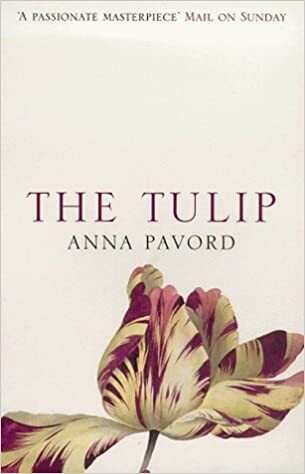 The Tulip
The Tulip
By Anna Pavord
ISBN 0745746215
Although Anna Pavord is a prolific horticultural writer, this is not a how-to gardening book. It starts with her search for wild varieties on Crete, then expands into an extensive and enthusiastic historical and botanical chronicle of all things tulip.
From a wildflower of the Asian steppes, the path of the tulip around the world has involved mysteries, dramas, disasters and triumphs. The most famous is probably tulipomania of the Netherlands in the 17th century, when at the height of speculation one ‘Semper Augustus' bulb sold for the amount equivalent to a fine Amsterdam home. Little did they know that a virus spread by aphids caused the flower colour changes back then. But this is just one story of many in this thoroughly researched book on the Dutch national flower.
Borrow this book from the HCP Library to read all the tulip stories.
Bonus tip: If you are enjoying tulips in your own garden right now, remember that they go dormant in the summer, and prefer a cool, dry space to rest.
March 2022
 Garden Eden: Masterpieces of Botanical Illustration
Garden Eden: Masterpieces of Botanical Illustration
By H. Walter Lack
ISBN 3822815217
Did you know that “the golden century of botanical illustration” was 1750 to 1850?
The Austrian National Library in Vienna owns one of the world's most significant collections of botanical illustration. It was showcased in 2000 with an exhibition and the publication of this book, Garden Eden: Masterpieces of Botanical Illustration. Almost 500 coloured plates grace the pages of this hefty book. Short descriptions of a paragraph or two accompany each, but the emphasis is on the illustrations.
Perhaps you have come across drawings of roses by Pierre-Joseph Redouté. Here his gorgeous Fritillaria imperialis is included. Perhaps you haven't heard of Johann Emanual Pohl. He was a natural scientist from Prague who endured a tortuous 50-month journey to Brazil in 1817. He has 10 gorgeous drawings here.
Garden Eden: Masterpieces of Botanical Illustration is a chronological look at almost 500 years of the naturalistic representation of plants, mostly flowering, but also algae, mosses and ferns, fungi and lichen. It is a tribute and a treasure. Take a relaxing wander through this lovely book. It's hard to do it justice in words. See for yourself how these artists celebrate our natural world.
It is available to borrow from the HCP Library.
February 2022
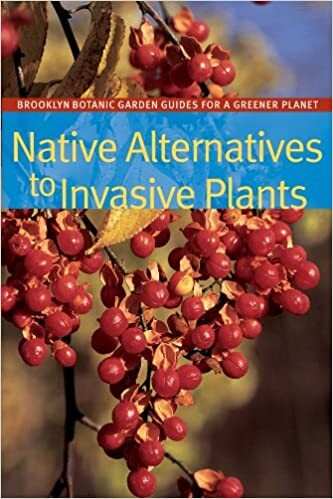 Native Alternatives to Invasive Plants
Native Alternatives to Invasive Plants
By C. Colston Burrell
ISBN 1889538744
Invasive plants are in the news. Just this week the Times Colonist reported (thanks to the HCP) that Arum italicum has jumped the border from Washington state and is causing problems in Greater Victoria.
https://www.timescolonist.com/local-news/toxic-invasive-plant-from-us-spreading-in-greater-victoria-5027256
An invasive plant is defined as one that causes harm to humans, the environment or the economy, whereas a native plant occurs naturally in a region without human intervention. Biologists consider invasive species a tremendous threat to native plants, second only to outright loss of habitat. Amazingly, many invasive plants are still being sold despite their noted ability to spoil natural areas.
This handbook is for both plant professionals and home gardeners. It shows many ecologically safe alternatives; beautiful, regionally native species that fill the same needs as the worst invasive plants commonly used in horticulture. It covers habitat and range, ornamental attributes and uses, and growing tips, with a profusion of colour photographs. It's well organized by plant group: trees, shrubs, vines, herbaceous plants, grasses.
Here are a couple of examples from the book:
Invasive tree: Ilex aquifolium (English holly); Native alternative Lithocarpus densiflorus (Tan Oak)
Invasive shrub: Buddleja (Butterfly bush); Native alternative Cephalanthus occidentalis (Buttonbush)
Invasive vine: Hedera helix (English Ivy); Native alternative Mahonia nervosa (Longleaf mahonia)
Invasive plant: Digitalis purpurea (Foxglove); Native alternative Iliamna rivularis (Mountain hollyhock)
Available to borrow from the HCP Library.
January 2022
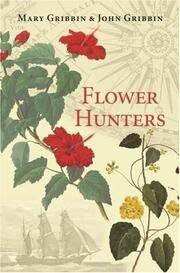 Flower Hunters
Flower Hunters
By Mary Gribbin and John Gribbin
ISBN 0192807188
Sometimes when we face challenges it is helpful to look outside ourselves for inspiration. History and biography can show us how others have dealt with struggles and persevered with strength and determination. In Flower Hunters, Mary Gribbin and John Gribbin share the stories of men and women who did just that. In the 18th and 19th Centuries the foundations for the new science of botany were being laid. These eleven intrepid explorers traveled the globe and risked all to paint, collect seeds and plants in the wild. They faced unexplored country, rugged mountains, impenetrable jungles, hunger, disease and local hostility.
Robert Fortune battled pirates to smuggle tea plants out of China. Carl Peter Thunberg passed himself off as a Dutch physician in order to travel around Japan. And Marianne North visited almost every continent to paint beautiful and scientifically valuable records of the plants she saw. Douglas Fir, monkey puzzle tree, orchids and azaleas are just a few of the thousands of plants brought back by these adventurous early botanists.
'Flower Hunters tells of their lives, their adventures, their scientific quest, and the lasting impact of their travels in our familiar garden plants.' Available to borrow from the HCP Library.
November 2021
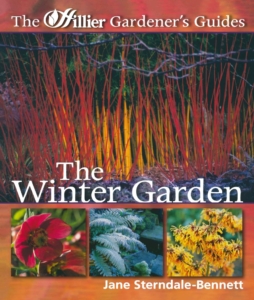 The Winter Garden (ISBN 978-1-55870-789-4)
The Winter Garden (ISBN 978-1-55870-789-4)
by Jane Sterndale-Bennett
This eye-catching book, The Winter Garden, takes a close look at the horticultural possibilities for the quietest season. The cover features deciduous dogwood (Cornus sanguinea) whose brightly coloured stems in winter are a prime garden attraction. Inside, many excellent photos illustrate the text beautifully. As Sterndale-Bennett shows, winter foliage can be surprisingly rich and varied, even if the palette has muted tones. Her foliage section has many entries, from large conifers to groundcovers, all displayed by colour. She includes a section on brown, tan and orange of course; but also ones on gold, silver and blue. This chapter is like window shopping!
We all know growing conditions vary widely. Sterndale-Bennett emphasizes that matching plant to place is key to a successful winter garden. Her section on growing conditions covers the usual situations (clay, woodland, container, etc), but from a winter garden perspective.
The Winter Garden also includes a discussion on enjoying our gardens in winter beyond colour, such as with scent, texture, light and movement.
This book inspired me to take a fresh look at my own garden. Besides having late fall and early spring interest, I've now got some ideas for adding plants for winter focus. You may find it inspiring also. It's available to borrow from the HCP Library.
And for more inspiration, next time you're here at the HCP take a stroll through the Doris Page Winter Garden. Key elements include coloured berries, bark and stems, flowers, fragrance and ornamental evergreens. Doris Page is credited with bringing Hellebores to Vancouver Island.
September 2021
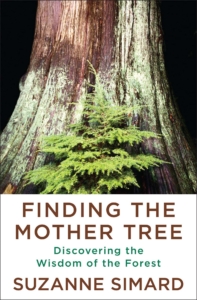 Finding the Mother Tree: Discovering the Wisdom of the Forest (ISBN 978-0-7352-3775-9)
Finding the Mother Tree: Discovering the Wisdom of the Forest (ISBN 978-0-7352-3775-9)
By Suzanne Simard
Few books have been requested at the HCP Library more than this one. Finding the Mother Tree, the latest addition to our library shelves, is the 2021 environmental science memoir by a ‘pioneer on the frontier of plant communication and intelligence', Suzanne Simard. Having spent 4 decades studying how trees communicate, this UBC ecology professor explains in her new book how the internet of the forest below ground is connected, with the biggest, oldest matriarch at the centre of the community. This ‘Mother Tree' helps organize a powerful network where mycorrhizal (fungal) links are used to send chemical signals. She describes how trees are social, cooperative organisms that learn, adapt and remember. She interprets forest society. In the beginning her evidence was highly controversial. Now the science is known to be rigorous, peer-reviewed and widely published. It influences provincial forestry policy and inspires scientific conversations worldwide. Simard comes from a long line of foresters, and in this book her story is tightly interwoven with that of the forest.
August 2021
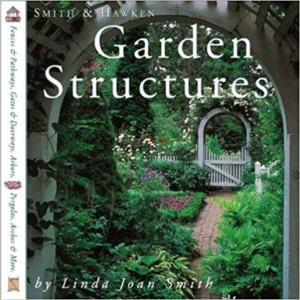 Smith & Hawken Garden Structures (ISBN 0-7611-1406-8)
Smith & Hawken Garden Structures (ISBN 0-7611-1406-8)
by Linda Joan Smith
A garden structure can be simple, common, grand or rare. It most often comes to the garden to fill a specific need, but it also can do more: alter a garden's mood, guide its uses, anchor it in time, and deepen its meaning.
Smith says the ultimate power of a garden structure is to make a powerful composition out of the chaos nature gives us.
Smith & Hawken Garden Structures covers all the different ways to create a framework on which a garden grows, including gates, fences, arbors, paths, decks, even potting sheds. And much more. Many projects are of wood, but other attractive materials are used such as brick, iron, stone, tile, concrete, and of course, plants (wattle, anyone?).
With a bounty of large colour photographs, this book is a visual feast. You may come away with motivation and a vision for a structure in your own garden after reading it.
July 2021
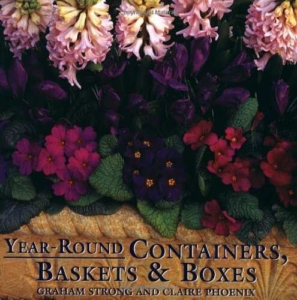
Year Round Containers, Baskets & Boxes (ISBN: 978-1552851036)
by Graham Strong and Claire Phoenix
A garden container can be all about instant colour, but more than that, it can be a wildflower creation, a child's project, or even edible. As well as a basket or a window box, plants can be grown in unusual containers such as a colander, a kettle or even a log. This book is full of ideas about design, styles and colour for all sorts of containers, baskets and window boxes. The plant directory has the usual lists for shade and drought tolerant plants. As a bonus, there are lists for:
Star quality plants
Plants to perform a floral marathon
Rapid growers for quick effect
Scented flowers and leaves
It has over 60 plans to choose from or use as inspiration for your own creations. Each plan has step-by-step instructions on how to create and tend to your planting. A full-page photo shows the completed project at its peak display.
While this book looks at container plants for all seasons, its emphasis is on summer, with many projects performing their best from June to September. So if you're looking for a dash of quick colour, something for a tricky spot, or have a container looking for a purpose, consider borrowing this book from the HCP Library to inspire a new planting.
June 2021
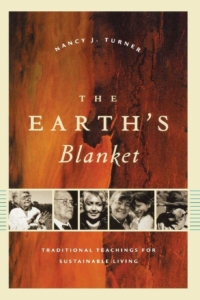 The Earth's Blanket: Traditional Teachings for Sustainable Living (ISBN 0-295-98739-1)
The Earth's Blanket: Traditional Teachings for Sustainable Living (ISBN 0-295-98739-1)
by Nancy J. Turner
According to the Nlaka'pmx (Thompson) Interior Salish people of BC, plants and grasses are the Blanket of the Earth. If too much vegetation is destroyed, the earth weeps. The stories, values and understandings in this book are focused mainly on BC landscapes and cultures. It ‘explores the wealth of ecological knowledge and the spiritual connection to the natural world that is fundamental to Indigenous cultures.' In sharing this ethnobotanical knowledge, Nancy J. Turner hopes that this book will highlight the depth and richness of this wisdom, so that all people may live more gently on the earth.
Nancy J. Turner has been learning from Indigenous elders about the relationships between plants and people since 1967. Her first Indigenous teacher was Christopher Paul of the Saanich Nation. She has been adopted by a number of families and given Indigenous names. All of her work is published with permission of the storytellers.
Borrow this book from the HCP Library and gain a deeper appreciation of these teachings in time for Indigenous Peoples Day on Monday, June 21.